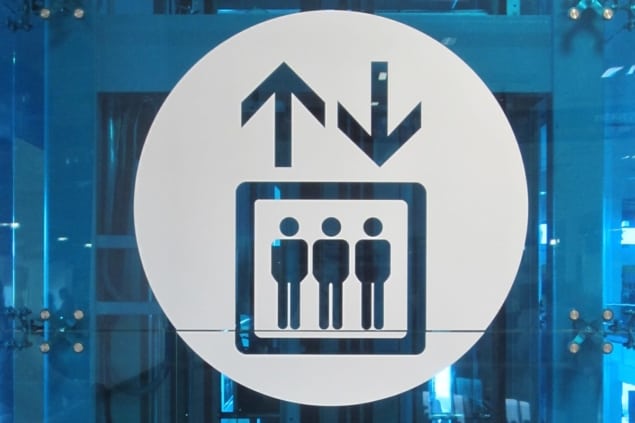
If you are like me, you probably haven’t spent much time in lifts or elevators recently. But as life slowly returns to normal, I could soon be rocking up at Physics World HQ, jabbing my finger at the call button and getting annoyed when the door doesn’t open immediately.
So is there a way to use mathematics to better understand elevator dynamics and predict how long I could have to wait?
Zhijie Feng at Boston University and Sidney Redner at the Santa Fe Institute have done just that. Writing in the Journal of Statistical Mechanics, the duo describe their minimum-variable simulation, which makes six key assumptions: the building is initially unoccupied; first-come-first-served service; identical elevators travelling to uniformly distributed destination floors; 2.5 s to enter or exit elevators; and 1 s to travel between floors.
Lots of lifts
For a 100-story office building with one infinite-capacity elevator, the study suggests waiting times would be 5-7 min. In a more realistic situation – a similar building with 100 occupants per floor with elevators that hold 20 people – they found that 21 elevators would be needed to get people to work on time. That might sound like a lot of elevators, but the 100-story One World Trade Center in New York City has more than 70.
Having more elevators should cut waiting times, but Feng and Redner found that during busy times the elevators start to move in lockstep – with the waiting time shifting from about 15 s back to 5 min.
Space aged
How much would you pay for a bottle of wine that has been aged for 14 months on the International Space Station? Some reckon that such a bottle of 2000 vintage Pétrus could bag $1 million in an upcoming auction at Christie’s in New York. It is one of 12 bottles that blasted off in 2019 and returning safely to Earth on 14 January 2021.
Cynical readers might think that this was a publicity stunt, but apparently scientists were interested in studying the effects of gravity (or lack of it) on the aging of wine. The goal being a better understanding of the aging process here on Earth – which is still a bit of a mystery.
The researchers found that 14 months in low gravity did result in differences in the colour, aroma and taste of space-aged versus Earth-aged wine. While the space-aged wines were different, they were commended for their complexity and considered to be great wines.
The wine is part of a package that includes a handcrafted trunk by the Parisian Maison d’Arts Les Ateliers Victor, a bottle of terrestrial Pétrus 2000, a decanter, glasses and a corkscrew made from a meteorite.
Proceeds from the auction go towards funding future space missions related to agricultural research.
